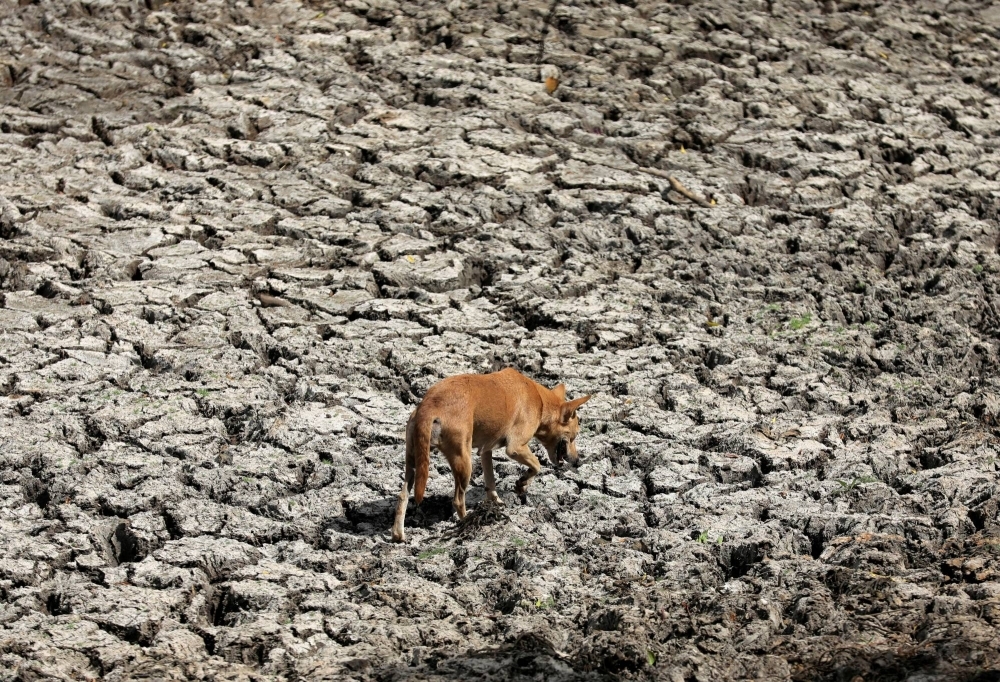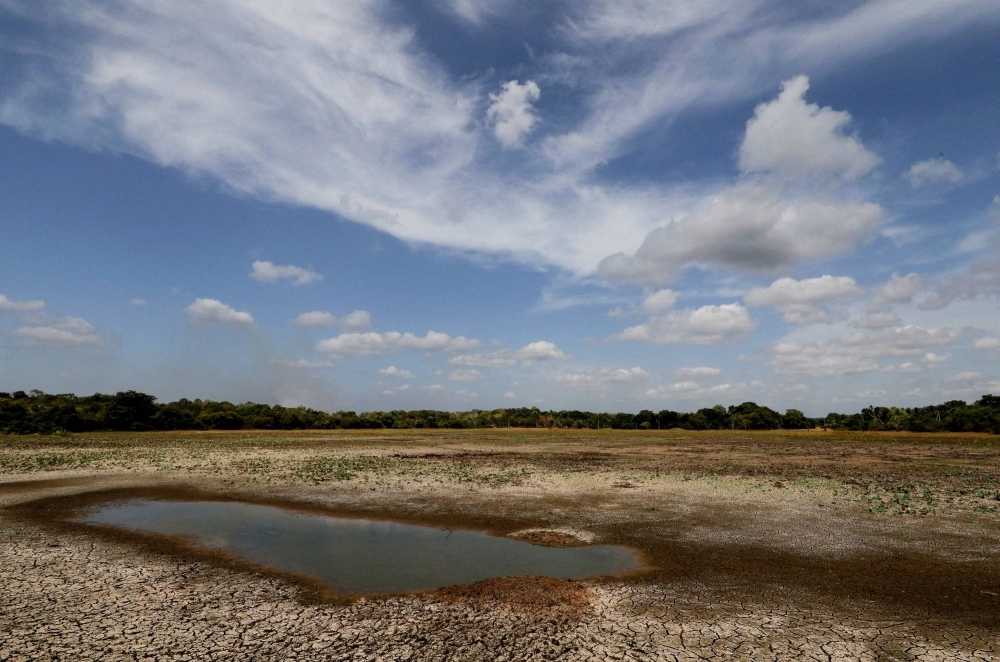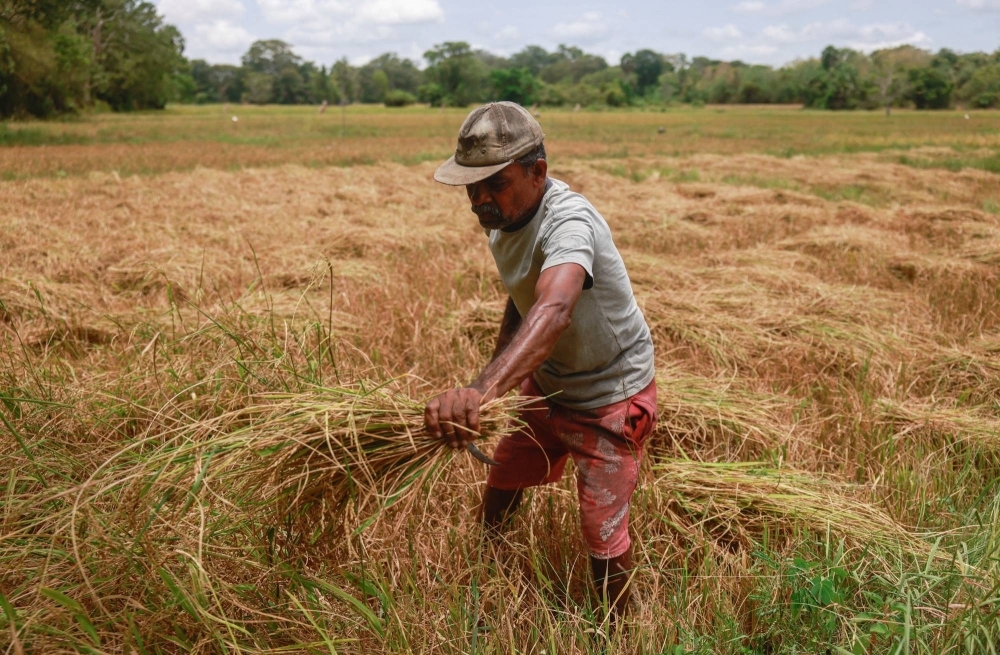Drought deals second blow as Sri Lanka struggles back from crisis
Posted on August 30th, 2023
BY UDITHA JAYASINGHE Courtesy Japan Times
ANAMADUWA, SRI LANKA –
H.J.M Seneviratne, 63, slices through yellowed paddy stems dried out by a drought that has destroyed over 95% of his crop and is threatening crisis-hit Sri Lanka’s summer rice harvest.
The island’s economy was crushed last year by its worst financial crisis in over seven decades, caused by a severe shortage of foreign exchange reserves that triggered widespread unrest and ousted its former president.
Helped by a $2.9 billion bailout from the International Monetary Fund (IMF) Sri Lanka has slowly stabilized its economy since March, rebuilding its decimated reserves, moderating inflation and strengthening its currency.
But even before the country’s agriculture sector could recover from sky-rocketing prices of inputs from fertilizer to power, the rains failed.
“I’ve been a farmer for forty years but I’ve never experienced a harder time than this,” Seneviratne said, standing in the middle of a dusty field near Anamaduwa, a town in north western Sri Lanka, clutching a fistful of straw-like paddy stems with hollow rice kernels.
“We haven’t had enough rain since May. The harvest is so bad we don’t even have seed paddy for the next season.”

A dog walks on the dried up bed of a lake near a paddy field in Anamaduwa, Sri Lanka. | REUTERS
The southwest monsoon farmers rely on for the yala or summer harvest was scant this year because of the El Nino weather pattern, and the weather department estimates there will be no rains until October.
Typically, Seneviratne’s 1.6 hectares yield about 4.5 to 6 tons of paddy for the summer harvest but this time he predicts he will get only about 150 kilogram. All but one of eight water tanks — large ponds in which rainwater is collected for irrigation — in the area have dried out, destroying about 80 hectares of paddy.
The paddy loss could be as much as 30,350 hectares, according to Agriculture Minister Mahinda Amaraweera, while other experts say full losses could be even higher as estimates are yet to be completed. Sri Lanka planted 526,000 hectares for the summer harvest, according to the Agriculture Ministry.
“We have lost at least 80,000 metric tons of paddy as per the latest data and it could be more,” said Buddhi Marambe, a professor of crop science at Sri Lanka’s Peradeniya University. Last year, when the crop was decimated by a lack of fertilizer because of the economic crisis, the season produced 1.5 million tons of paddy.
The drought could reverse a recent trend of falling food prices, which dipped an annual 2.5% in July after rising 94% year-on-year last September.

A dried-up lake, used for collecting water for farming, amid drought in Anamaduwa, Sri Lanka | REUTERS
Sri Lanka’s central bank warned last week that the dry weather coupled with higher global oil and commodity prices could also “weigh on expected growth in the near term,” as the island struggles to limit economic contraction to 2% this year after shrinking 7.8% in 2022.
Sri Lanka’s northern neighbor India is also expected to have the driest August in more than a century, prompting it to restrict exports of certain categories of rice. Sri Lanka has previously imported rice from India to bridge production shortfalls.
Sri Lanka has so far ruled out rice imports this year, a statement from the president’s office said, as regions that have escaped the drought have produced higher yields.
Rice prices have remained largely unchanged at retail, edging up about 10 Sri Lankan rupees (about 3 U.S. cents) to 220 rupees per kg from last month. So far, rice stocks have staved off any impact but prices could tick up in coming months with a scant harvest.
Experts say they are worried that if Sri Lanka doesn’t receive the rains it needs next March because of the continuing El Nino, the country will be left with such limited reserve stocks it will have to resort to large-scale, expensive imports.

H.J.M Seneviratne, 63, cuts yellow paddy stems that dried out following a drought, at his paddy field in Anamaduwa, Sri Lanka. | REUTERS
El Nino, a warming of water surface temperatures in the eastern and central Pacific Ocean, is linked to extreme weather conditions from tropical cyclones and heavy rainfall to severe droughts.
During the last El Nino in 2016-17, Sri Lanka suffered its worst drought in 40 years and rice output fell by nearly 50% year-on-year to 2.4 million metric tons over both its harvests.
Rice is the staple food of the country’s 22 million people and its biggest crop. According to government data, 2 million people in the country are rice farmers out of 8.1 million people engaged in fishing and agriculture in the largely rural economy.
To limit the El Nino impact, Marambe says farmers will have to plant early during the maha paddy season that starts in October, as rains next March and mid-year are uncertain.
“If rains fail in March it will impact our main paddy season and we could have a very, very dry second season as well in the middle of 2024.”
The drought has also wiped out the small chile, peanut and banana plants Seneviratne’s wife, W.M. Makamma, 62, grows to feed her family.
“Before the crisis we used to cook for all three meals but now it’s only two,” she said. “We’ve stopped buying eggs, chicken or fresh fish. Lunch is a cup of black tea.
“I feel like we have fallen completely and its very hard to get back up.”